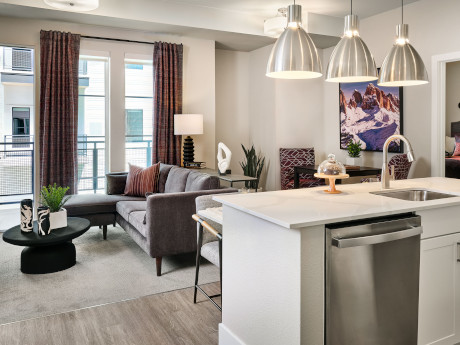By Taylor Williams
ATLANTA — Seniors housing has long been established as a viable property type within the spectrum of commercial real estate investment, and at the institutional level, major seniors housing owners oftentimes happen to be major healthcare owners as well.
The pairing is only logical. Seniors tend to require disproportionate amounts of healthcare resources, which is why ideal sites for their residential facilities tend to have proximity to hospitals. It also explains why the staffers who make these facilities run often have medical training backgrounds.
Therefore, to continue to evolve as an asset class and investment proposition, it follows that seniors housing owners must, from top to bottom, deepen their embrace of healthcare technologies and operating philosophies within their properties.
Editor’s note: InterFace Conference Group, a division of France Media Inc., produces networking and educational conferences for commercial real estate executives. To sign up for email announcements about specific events, visit www.interfaceconferencegroup.com/subscribe.
At the InterFace Seniors Housing Southeast conference in Atlanta in late August, several panelists representing prominent owner-operators encouraged a crowd of 400-plus attendees at the Westin Buckhead Hotel to do just that.
Incorporating both tangible and intangible features of pure-play healthcare properties and operations reflects an earnest attempt to better identify and serve customers and, just as crucially from a real estate perspective, ensure that the right product is being built.
Tim Gary, founder and CEO of Atlanta-based owner-operator Galerie Living, was the first panelist to touch on this notion.
“Seniors housing did very well through the 2008 [financial] crisis and very well during COVID. We’ve proven ourselves as an institutional market, and the next step is to prove that we’re a healthcare system,” he said. “We call ourselves ‘seniors housing’ and ‘real estate,’ but at the end of the day, we have to be linked and coordinated with the doctors’ offices, hospitals and rehab [clinics]. The most effective way to do that is through technology.”
Gary backed up his statement with the assertion that within any seniors housing company, the most important executive is not the CEO or CFO, but the chief clinical officer or director of care. This is because the offerings provided to residents by the clinicians and medical care teams are most responsible for driving rent growth, he contended. And in addition to physically bringing cutting-edge medical technology into their properties, seniors housing owner-operators can unlock value by repurposing older product that is in close proximity to existing major healthcare facilities.
Mike Hartman, principal of the active adult division at Capitol Seniors Housing, agreed that understanding and addressing the healthcare component is essential to ensuring that developers are truly meeting market demand. In an environment in which costs of capital and construction have generally been “higher for longer,” delivering product that can be leased up of in a timely and cost-effective manner is paramount.
“[Healthcare] represents the central question of the day and the one that we spend a lot of our time thinking about — the spectrum of senior living [product types] and access to care,” he said. “It behooves all of us to think about where within the spectrum is the right place to deliver services.”
“We put a lot of thought into what the product looks like, how it’s built, what the customer is willing to pay for it, how it can be done profitably from an investor’s perspective,” he continued. “The challenge is that at the same time, the trajectory of residents and their preferences and needs is changing and evolving. The buildings and customers are changing, and we have to think about that before we put shovels in the ground.”
Later in the discussion, Gary revisited the importance of proximity to healthcare — this time in a metaphorical sense — as a means of maximizing residents’ wellness and overall living experience. He also said that even if a building is older and lacks some of the fancier bells and whistles that accompany new construction, equipping the property with modern, efficient healthcare technology helps it remain relevant and, by extension, financially sound.
“Are we taking the technology and helping seniors to maintain that?” he asked rhetorically. “Are we using the technology to help residents and their families actually coordinate with all their healthcare [providers]? Are we able to pass along information among families and clinical teams? That is proximity to healthcare, and that will solve a lot of our problems.”
In terms of concrete steps that owners can take in this direction, Gary said that forging more partnerships with grocers and pharmacies is a good place to start. He demonstrated the validity of this statement by recounting some past working experiences he’s had with these retail users, who he said “all want to sell more medications.”
“We’re going to have to step outside the box, partner with these big companies and use [their] technology for our communications components,” he said.


